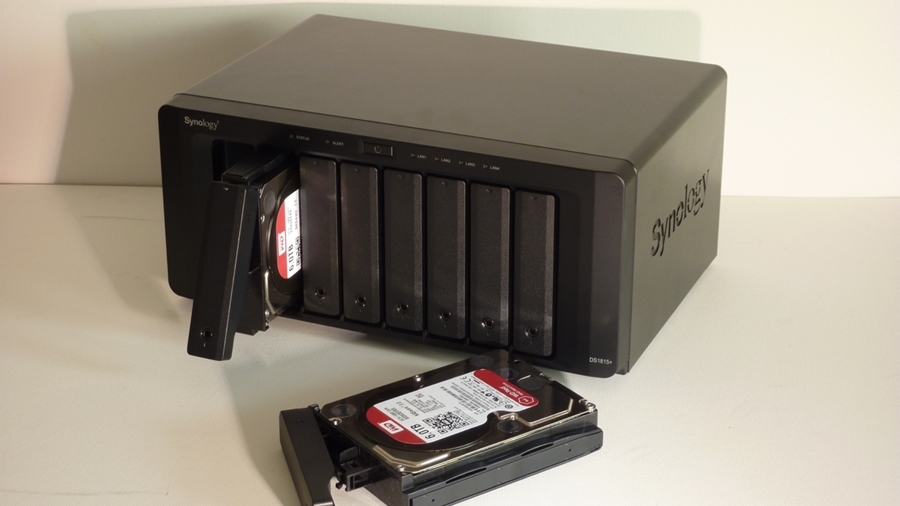Why you can trust TechRadar
We Liked
The build quality and physical design of the DS1815+ are simply fantastic. With the notable exception of the bonded ethernet connections, it's really easy to set up and use. It's sturdy, quiet and arguably quite attractive too.
DiskStation Manager is still light years ahead of any competitor's software, in terms of both ease of use and the staggering amount of functions it offers. No rival can touch the interface design, although admittedly, plenty of competing NAS units offer a good array of software features as well.
The expandability is great to see too. Adding an additional 60TB of capacity without having to buy another NAS is something I can see many owners taking advantage of, since the entire volume will be accessible and managed from a single point, with a single set of security controls and so on.
We Disliked
The gaping hole in the feature list of the DS1815+ is 10GbE. Faffing around with LACP in your switch software and bonded connections and took a lot of time to get working. If you don't have a switch that supports this feature, you'll be stuck running it at standard gigabit ethernet speeds.
This is obviously a cost issue. The DS1815+ has been designed to be (relatively) affordable, and adding 10GbE hardware would have pushed the pricing close to the levels of larger NAS units. If you're considering the DS1815+ for home use, a switch that supports LACP is an additional expense you might need to consider.
When Synology designs a follow-up to the DS1815+, perhaps 10GbE prices will have dropped enough to warrant its inclusion. But right now, if you want 10GbE, you need to be looking at the next tier of NAS units.
While performance is mostly excellent, some results from the Intel NAS Performance Toolkit could have been slightly better. I had expected the quad-core CPU to chew through the Photo Album test, but it wasn't amazing, and was outclassed by the Thecus NN810U-G. This is possibly because while still a quad-core chip, the C2358 is only an Atom processor. However, the DS1815+ edges ahead of the NN810U-G in some of the other tests.
Final verdict
The DS1815+ is an excellent NAS that can be used in many different ways. It offers enough performance to be used as a network server, running databases, web sites and so on. Equally, with up to 108TB of storage, the DS1815+ can be configured as a gargantuan file server, which may be of particular interest to media organisations, who might be shunting terabytes of 4K video around a network.
It fits perfectly between the NAS units aimed at home users, with two or four bays, and the really powerful enterprise models.
That said, it has its limits. The CPU is a step behind the Xeon processors you get with higher-end NAS units, and therefore under really heavy load the DS1815+ is no substitute for a real server. And in large enterprises, ECC memory might be required, which is not supported by Atom processors.
Running the four ethernet ports together as a single bonded connection is straightforward, as long as you have the required hardware. But without an LACP-capable switch, you're stuck on lower speeds. That might be a small additional expense to consider, but even with that added on top, the overall cost of the DS1815+ is far lower than a 10GbE-capable NAS.
Even with this in mind, the DS1815+ is a great upgrade from its predecessor and a strong performer. Unless your business has particularly demanding applications, it will serve you well.
